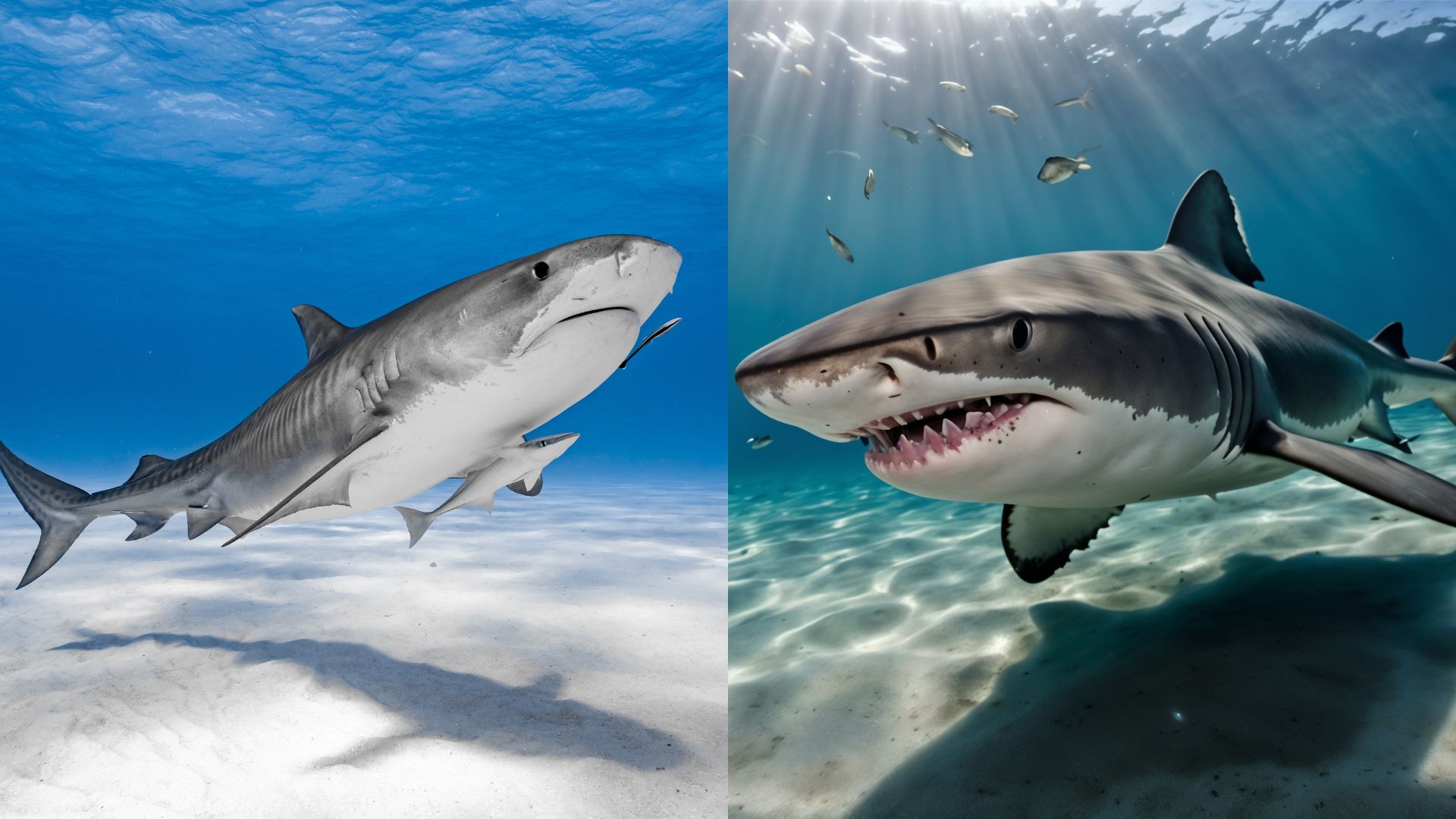Dive into the fascinating world of sharks as we explore and compare two of the ocean’s most intriguing creatures: the Great White Shark and the Tiger Shark.
These apex predators are known for their impressive size, hunting skills, and unique behaviors that set them apart in the marine ecosystem. Let’s check out the most captivating facts that highlight the differences and similarities between these two enigmatic species.
Whether you’re a shark enthusiast or just curious about these ocean dwellers, you’re in for a treat!
1. Size and Appearance
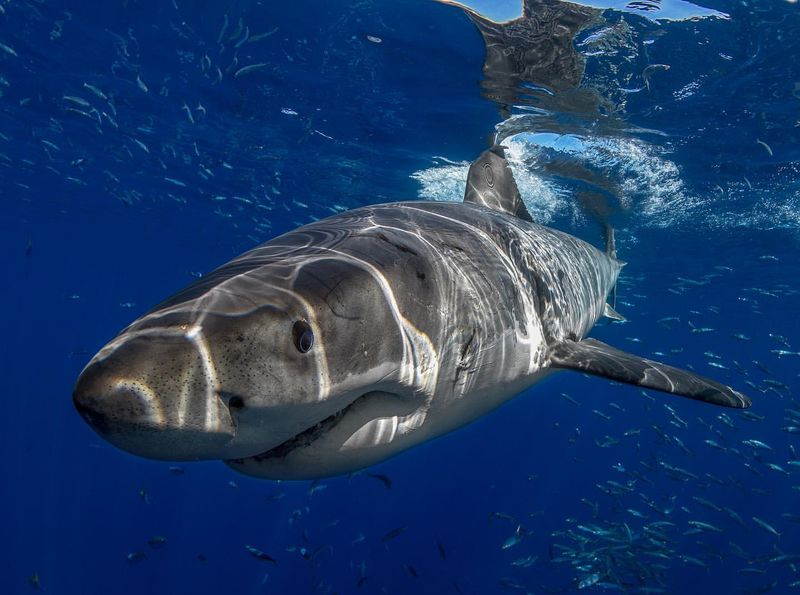
Great White Sharks are known for their massive size, often reaching lengths of up to 20 feet and weighing several tons. Their robust, torpedo-shaped bodies and distinctive white underbellies make them easily recognizable.
In contrast, Tiger Sharks are slightly smaller, typically growing up to 16 feet. They are distinguished by their tiger-like stripes that fade as they mature. These stripes are not just for show; they help the shark camouflage in their natural habitat.
Despite their differences, both sharks are apex predators, ruling their respective marine territories. The Great White’s size gives it an edge in colder waters, whereas the Tiger Shark’s adaptability allows it to thrive in tropical climates.
Their physical characteristics reflect their evolutionary adaptations, with each having developed unique features to suit their environments.
2. Dietary Habits
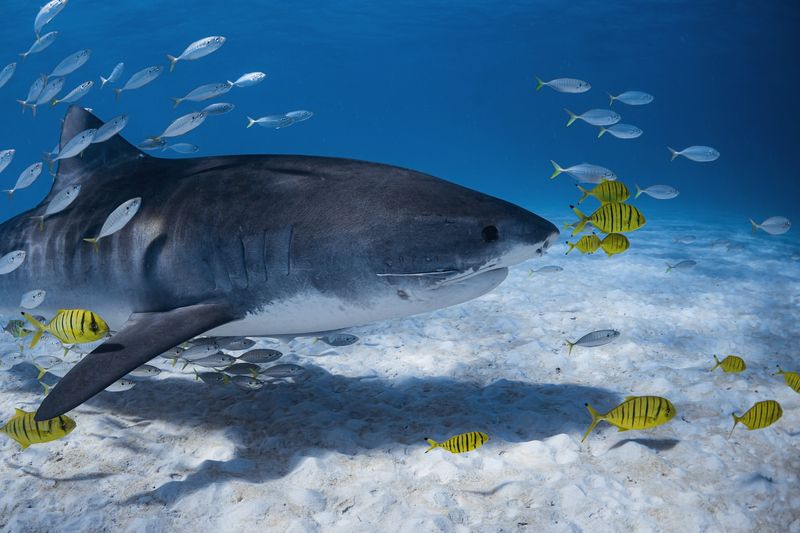
The dietary preferences of Great White Sharks and Tiger Sharks are as diverse as their habitats. Great Whites are notorious for their preference for marine mammals like seals and sea lions. Their powerful jaws and sharp teeth are perfectly adapted for tearing through thick blubber.
On the other hand, Tiger Sharks are often referred to as the “garbage cans of the sea” due to their less selective diet. They eat a variety of prey, including fish, turtles, and even birds. Their keen sense of smell and ability to consume a wide range of organisms make them formidable hunters.
Both species play crucial roles in maintaining the balance of the ocean’s ecosystem, showcasing nature’s intricate food web. Their dietary habits highlight their adaptability and the vital roles they play in their respective marine environments.
3. Habitat and Range
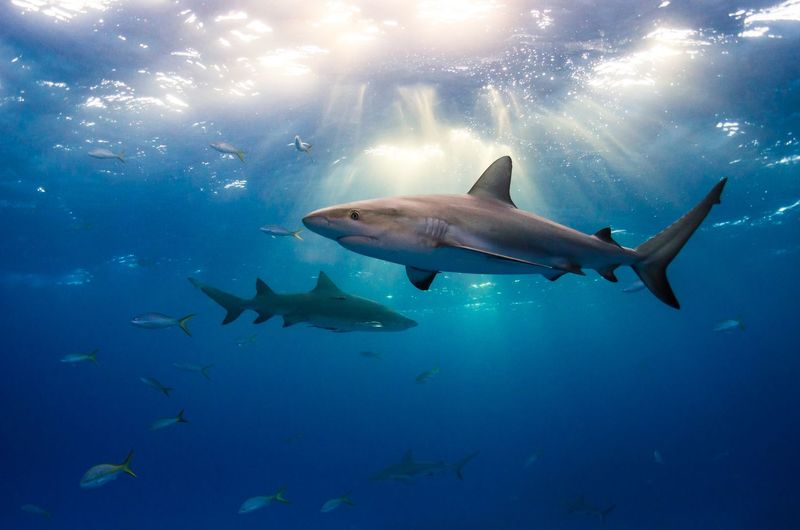
Great White Sharks are predominantly found in the cooler coastal waters of major oceans, particularly around South Africa, Australia, and the Northeastern United States.
Their preference for temperate waters aligns with their hunting habits, often targeting seals and other marine mammals. In contrast, Tiger Sharks are more commonly found in warmer, tropical waters. They inhabit areas around the central Pacific Islands, the Gulf of Mexico, and parts of Africa and Asia.
This wide range reflects their adaptability to various marine environments. Despite their different preferences, both sharks are migratory, covering vast distances in search of food and suitable breeding grounds.
Their habitats are vital for their survival, offering the resources they need to thrive. Understanding their distribution helps in conservation efforts, ensuring these majestic creatures continue to roam our oceans.
4. Hunting Techniques

Great White Sharks are famous for their dramatic hunting techniques, including breaching – leaping out of the water to catch prey by surprise. This method is particularly effective in seal-rich areas where they can use the element of surprise.
In contrast, Tiger Sharks rely more on stealth and patience. They are often seen slowly cruising near coral reefs or the ocean floor, waiting for the perfect moment to strike. Their ability to remain undetected until the last moment makes them successful hunters.
Both species have evolved distinct hunting strategies that reflect their environments and prey choices. These techniques showcase their intelligence and adaptability, allowing them to efficiently capture their prey and maintain their status as top predators.
Observing these behaviors offers insights into the complex interactions within ocean ecosystems.
5. Reproductive Behavior
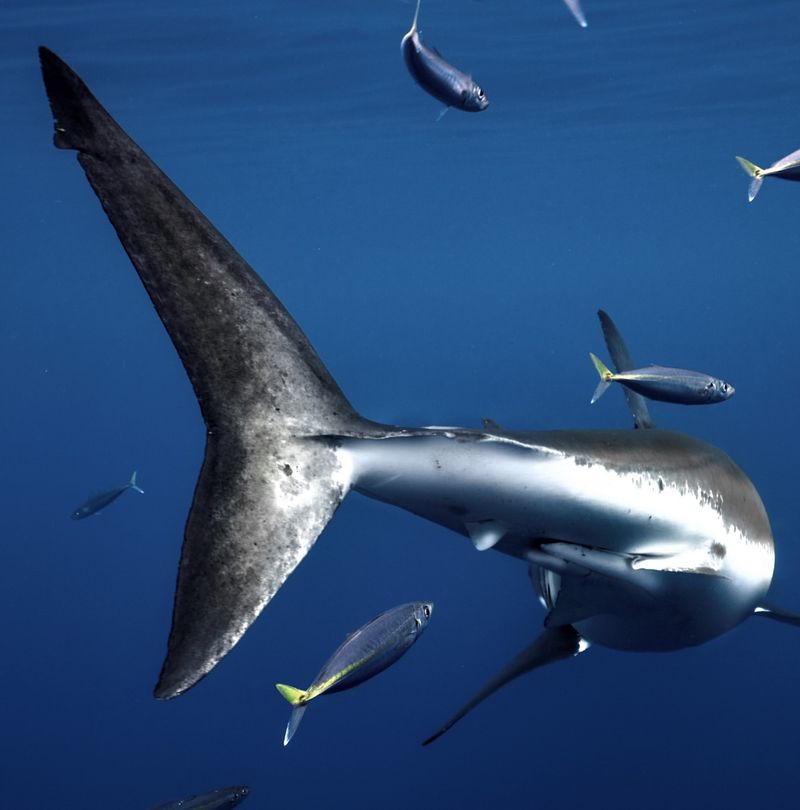
Great White Sharks have one of the most mysterious reproductive behaviors in the shark world. They are ovoviviparous, meaning the eggs hatch inside the female’s body, and she gives birth to live young. The gestation period is lengthy, lasting up to 18 months.
In contrast, Tiger Sharks are also ovoviviparous but have a different approach to reproduction. Females give birth to large litters, sometimes numbering over 30 pups, after a shorter gestation period of about 14 to 16 months.
The young are born fully developed and are independent from birth, requiring no parental care. These differences in reproductive strategies highlight the unique adaptations of each species to their environments.
Understanding these behaviors is crucial for conservation efforts, as it helps in ensuring the survival of future generations.
6. Social Behavior

Great White Sharks are typically solitary creatures, often seen swimming alone in the vast ocean. This solitary behavior is linked to their status as apex predators, preventing competition for food. However, they do come together in feeding frenzies or when mating.
On the other hand, Tiger Sharks exhibit more social tendencies. They are often found in groups, particularly when food is abundant.
This social behavior is believed to be a strategy for maximizing feeding opportunities. Both species demonstrate unique social behaviors that reflect their ecological roles and survival strategies.
Observing these behaviors helps researchers understand the complex dynamics of shark communities and the evolutionary pressures they face.
These social patterns are a testament to the diversity of life and the various ways animals adapt to their environments.
7. Lifespan and Longevity
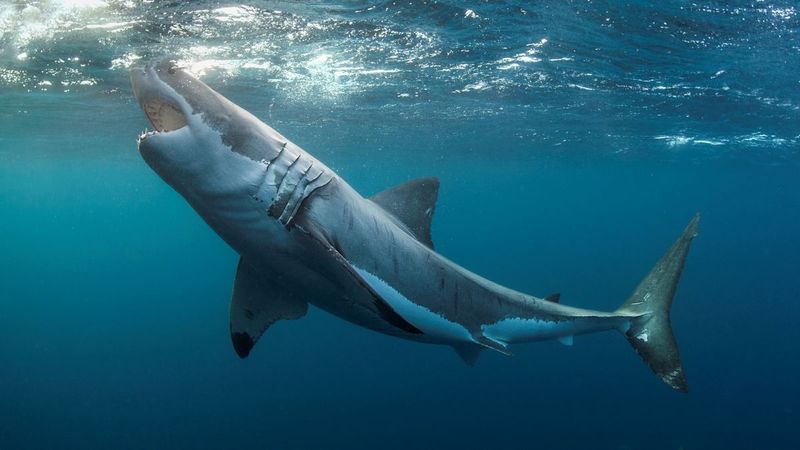
Great White Sharks are known for their impressive longevity, with some individuals living up to 70 years. Their slow growth rate and late maturity contribute to their extended lifespan.
In comparison, Tiger Sharks have a slightly shorter lifespan, typically living up to 50 years. Despite their shorter lifespan, Tiger Sharks grow rapidly and reach maturity much earlier than Great Whites. These differences in lifespan and growth rates are reflective of their evolutionary strategies.
Great Whites invest in fewer offspring with longer lifespans, while Tiger Sharks produce more young with shorter lifespans. Understanding these life history traits is essential for managing shark populations and ensuring their continued survival.
The longevity of these species is a fascinating aspect of their biology, offering insights into the resilience and adaptability of sharks.
8. Intelligence and Learning
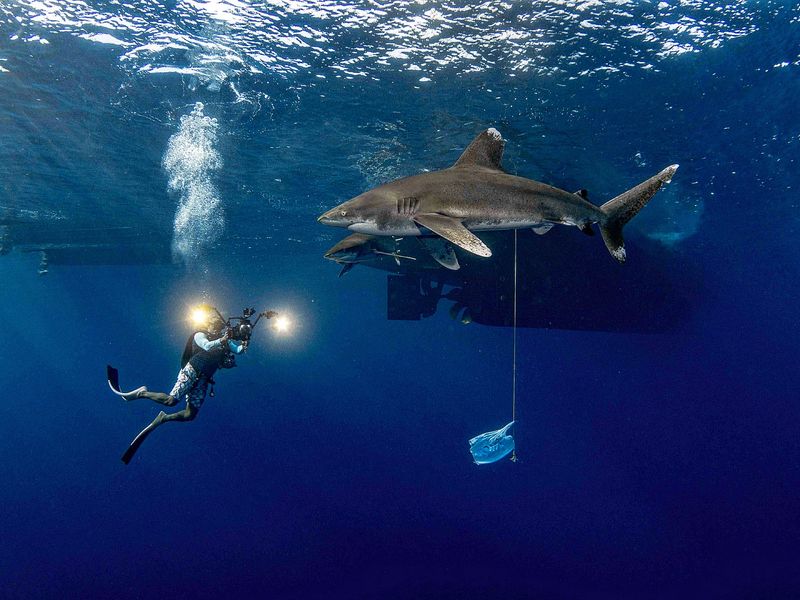
Sharks are often underestimated in terms of intelligence, but both Great White and Tiger Sharks have demonstrated remarkable learning abilities. Great Whites are known for their curiosity and problem-solving skills, often seen investigating new objects in their environment.
They are capable of learning from experience, adapting their hunting strategies based on previous encounters. Tiger Sharks, on the other hand, exhibit a high degree of adaptability, thriving in diverse environments by learning to exploit available resources.
Both species showcase impressive cognitive abilities that challenge traditional perceptions of fish intelligence.
These behaviors highlight the complex mental capabilities of sharks, suggesting a level of awareness and understanding of their surroundings. Studying their intelligence provides valuable insights into the evolutionary pressures that have shaped their development and survival strategies.
9. Human Interactions

Human interactions with Great White Sharks and Tiger Sharks are a mix of fascination and caution. Great Whites are often associated with cage diving experiences, where thrill-seekers can observe these majestic creatures up close in a controlled environment.
This form of ecotourism has contributed to raising awareness about shark conservation. Tiger Sharks, while also popular among divers, are known for their curious nature and can often be seen in shallower waters. Both species have a reputation that precedes them, largely due to media portrayals.
Despite this, encounters with these sharks are rare, and they play a vital role in marine ecosystems. Education and conservation efforts are crucial in changing public perceptions and promoting coexistence.
These interactions underscore the importance of respecting marine life and the delicate balance of ocean ecosystems.
10. Communication and Senses
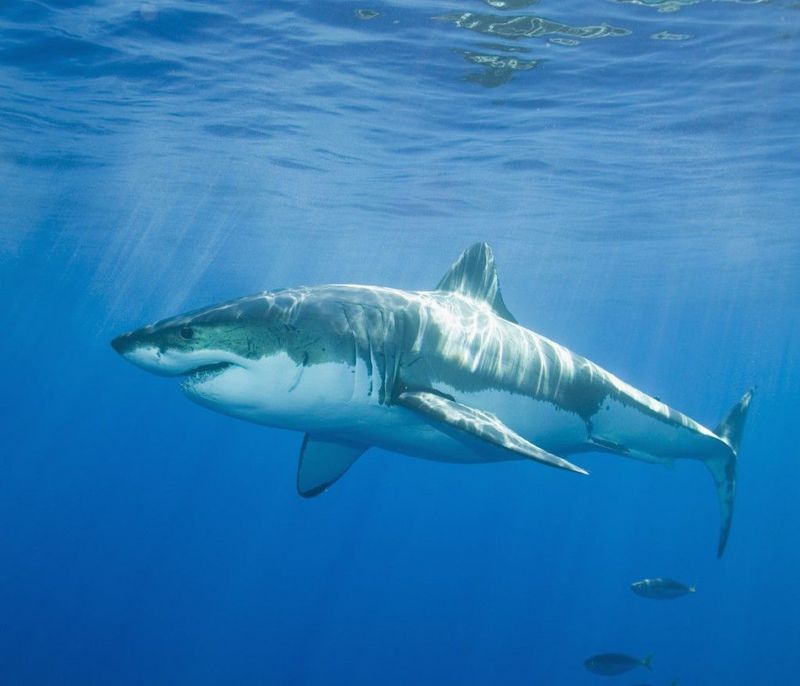
Sharks have evolved complex communication and sensory systems to navigate their environments and interact with other marine life. Great White Sharks use body language and postures to communicate, such as arching their backs or lowering their fins to signal aggression or submission.
This form of communication is crucial for avoiding conflicts and establishing dominance. Tiger Sharks, on the other hand, rely heavily on their acute senses to navigate and hunt.
They possess electroreceptors that allow them to detect the faint electrical signals emitted by prey, even in the dark. Both species have a sophisticated understanding of their surroundings, using these senses to thrive in diverse environments.
These communication and sensory abilities highlight the remarkable adaptations sharks have developed to survive and succeed as apex predators in the ocean.

